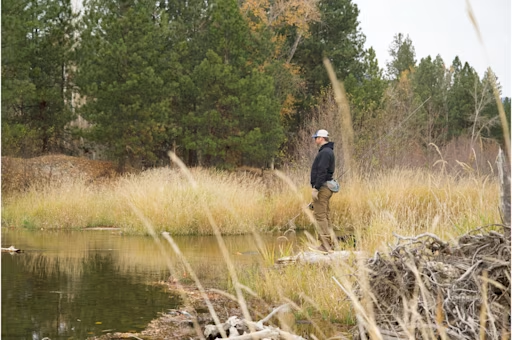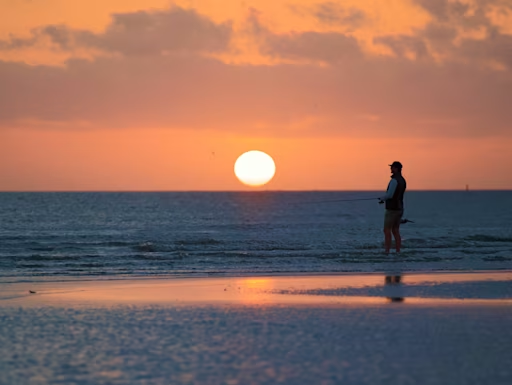Post spawn bass tips
Discover the best post-spawn bass fishing tips, including top lures, proven techniques, and key locations to target big bass after the spawn.
Share this article

Post spawn is considered the quiet after the storm. The voracious attacks of hungry pre-spawners are over and you can no longer bet on a strike every time you cast into great cover. Fish are worn out, not feeding, with many sitting on and guarding their fry. You don't need to stay off the water, however, as bites are still there for you to set the hook on, if you pay attention to which stage the fish are in and if you cast the right lure with the right presentation.
Where to start

Bass don't all start and stop spawning at the same time. While some are getting off the nest, others may be just starting to sit. Proper fishing ethics are important here. We all want more bass to catch, so minimizing harassment of fish on the nest is important. Instead, focus on the edges of known spawning areas and stay clear of the actual nest. You can target bass coming off the nest in the edges as they prepare to travel to their sumer range in deeper water.
As time goes on, you can start targeting drop offs and transition zones from shallow flats to deeper water. This can be a winning strategy throughout summer even, as bass will focus on these areas for hunting during early mornings and evenings.
As post spawn goes on, focus mostly on the drop off areas, if late spring storms hit and your water level rises, your focus should change to submerged brush and reeds. The new habitat brought on by the storm will make for an irresistible holding and hunting ground.
Water temp may mean everything

Warming water and spawning are what bring fish into the shallows during prespawn, but as the season heats up, that cozy water will start getting too hot. Water temperature is far more important than many anglers realize and will dictate where fish are holding all year long. Rising temps should have you searching for cool pockets, like potholes, or under docks and in shade, whereas a coldsnap will bring them right back up into the warmer flats.
Females that are off the nest, will head for deeper water at this point, so you will know to start targeting the transition zones, or deeper water depending on what stage of the spawn you are fishing. Males begin guarding the fry after they hatch and are limited where they can hold. Warm temps will send them looking for cool pockets that could be just a foot or two deeper, or shade.
What to throw. How to throw it.

Bass aren’t the only fish spawning. Baitfish like shad are also hatching out and instantly become one of the primary food sources for post spawners. Watch for congregations of bluegill fry, shad, or shiners spawning. Casting and running a lure through can make bait fish panic and boil.That’s a good sign to stay in an area as where there is bait there will be predators.
If you’re still not getting a bite, it could mean male bass are holding tight, or guarding fry. You can try eliciting an aggressive strike by mimicking predatory bluegill, or by using a small topwater lure to make aggressive splashing.
Spinner baits and buzz baits can be very effective lures if you can time it so you’re fishing just after bass are leaving the nests. These fish have likely been starving themselves, as many animals do, during their mating season and are now trying to regain lost calories quickly. Spinners and buzz baits create large strike areas.
Throw what, where now?

Rising water temperatures, as spring turns to summer, will stress fish. If the temps rise while males are in protection mode, deepwater still wont be safe enough for the fry, so look for congregations in shaded cover, like under docks, low hanging branches and more.
Steep banks that drop off, or vertical rock walls are another place to target post spawners. Shad and crawfish often congregate where these steep drop offs meet the lake bed and make for a great place for a post spawn fish to regain weight and energy after the long breeding season.
Soft plastics can be incredibly effective this period, as well. If the bite just isn't on, the finesse of soft plastics, slowly working the lake, or river bed can be irresistible. Weedless rigged soft plastics are also helpful when you think schools are recovering by holding tight into weed beds, submerged brush, or logs.
Don’t let this feast, or famine time of year keep you from setting the hook. Bass still have timely, biological, factors that drive their feeding and that you can take advantage of. Make the most of this time of year and improve your observational skills and fish knowledge when other anglers give in, by giving up.
If you haven't experienced the #1 fishing app worldwide, make sure and check out Fishbrain to see all the fish data, fishing spots, weather conditions you've been missing out on plus much more.

Download the Fishbrain app and access the best fishing spots in your area
Related blog posts
Your guide to Victoria’s best fish to catch in rivers, lakes, and coastal waters. Learn prime species, fishing tips, and key regulations

Learn how fish adapt as water temperatures cool from autumn to winter, including changes in behavior, metabolism, and habitat that help them survive.

From the beaches of Florida to the Great Lakes tributaries in Pennsylvania, learn how fish adapt to fall weather and how you can capitalize on that change.




